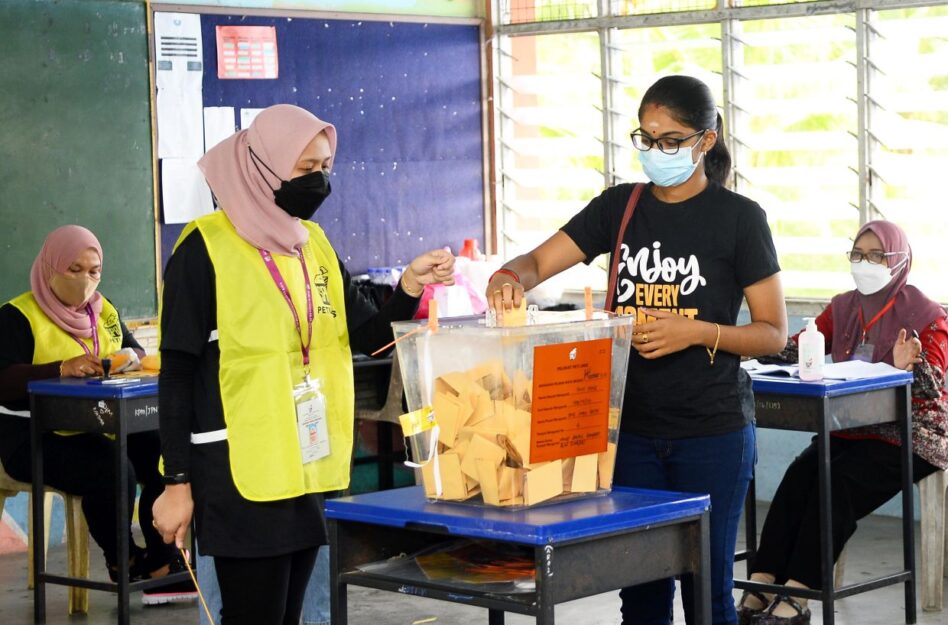MANY employers and industry players have complained about the poor quality of graduates our tertiary education system is churning out yearly, with both sides pointing fingers at one another.
While employers complain that our education system does not prepare graduates with real skills needed for the working world, the education sector accused the former of just trying to find fault in local talents, to justify their need to hire migrant workers.
With both sectors uncompromising on their stand, it is leaving much of our local talents without jobs, leaving them either unemployed or underemployed.
“Our unemployment and underemployment problems were caused by Malaysia’s privatisation programme back in the 1990s.
“After the policy was mooted, a lot of private colleges and universities were built in excess, with the education quality compromised for the sake of profits,” Parti Sosialis Malaysia (PSM) central committee member Sharan Raj told FocusM, in an interview.
Touching on the past, Sharan said that after the New Economic Policy (NEP) was mooted back in the 1970s, the Government then embarked on nationalising the education system, which saw Tamil schools, convents and several Chinese schools coming under Federal purview.

Under the NEP, the Government build a lot of universities and vocational training schools to prepare Malaysians for the workforce.
“I can say that the programme was successful as it curtailed unemployment to below 4%. As for underemployment, it was virtually unheard of back then.
“Our unemployment numbers were the lowest among Aseans nation and I dare say, among Non-Aligned Movement (NAM) countries as well.
“In terms of wages, our local workforce was paid fairly well at that point of time,” he said.
Among the reasons why the Government was successful in creating jobs then, Sharan added, was due to the Government’s central planning system (five-years Malaysia Plan), which includes matter such as how many houses to build, schools, infrastructure, factories and others.
He said that using Malaysia’s Five-Year Plan, the Government projects the number of workers needed and the type of employment it would create during the period.
“For example, if the Government plans to build 100,000 houses in that five years, they will check on how many engineers or technicians needed for the project.
“From there, they will calculate backwards to meet the demand. The method was highly successful as it kept unemployment and underemployment in check,” Sharan mentioned.
However, all that changed when from 1995 onwards when the then Prime Minister Tun Dr Mahathir Mohamad decided to embark on massive privatisation programme, which also included leaving educating the future generation in the hands of private players.
Mahathir, Anwar and Najib
Sharan said that the trio who spearheaded the move were the then Finance Minister Datuk Seri Anwar Ibrahim, then Education Minister Datuk Seri Najib Tun Razak and Mahathir himself.
“What these people did was they cut backs taxes on the super-rich such as the Capital Gains Tax. So, when public coffers were affected, the Government reduced spending on building public educational facilities.
“With that, public universities increased student fees. Later on, they also introduced all sorts of other fees to make up for the shortfall.
“Bear in mind that in the past, our undergraduates paid only a nominal fee to enter public universities. Even those who couldn’t afford it just worked part time, for a while, to settle it.
“So, those who argue that offering free education as being unsustainable are insincere because we did have that in the past,” the PSM leader remarked.
Later, the Government enacted the Private Higher Education Institutions Act 1996 (Act 555) which allowed the unbridled formation of private colleges and universities across Malaysia.
“But people could not afford the higher fees, both in the public universities and private ones. So, Umno Youth then proposed a student loan programme, which took shape and became the National Higher Education Fund Corporation (PTPTN) in 1997.

Sharan said the matter was made worse when Najib took over as Prime Minister in 2009, when he mooted the Economic Transformation Programme (ETP), which shifted the Government’s role from education provider to regulator.
Due to the ETP, he said that various colleges and universities started to mushroom all over the country, arguing many of them did not even meet the minimum requirement to be called a tertiary education provider.
“Hundreds of college licences were dished out within the span of two years. A lot of them were located on top of bus stations, in shoplots and I’ve even seen some operating from on top of a mechanic shop.
“They are called ‘mushroom colleges’ and lacked proper facilities, including lecturers. However, the fees imposed were exorbitant.
“On the other side of the spectrum, no new public universities were built during the period. The Government just tried to squeeze as many students as possible in existing public varsities, which has caused overcrowding,” Sharan mentioned.
On teaching and learning quality at private varsities, the PSM leader said that most of the students learnt from textbooks, with little time spent on practical skills.
“And this is why employers are complaining about the quality of our local graduates. However, they fail to make distinction between those educated in the Government run facilities and private ones,” he opined.
As for the public universities, Sharan said that Government representatives hold periodic meetings with industry captains and academicians to find out on what type of talents the job market would require in the next five years.
Therefore, he added, public universities are in the know on what courses they would need to prop up, to meet future industry demand.
“But private varsities lack such engagements. As they are profit-oriented, these entities keep their entry barriers so low that anyone can qualify for it,” he stated.
Return to pre-privatisation policies
With all these failed policies, Sharan said that Malaysia is now facing an unemployment and underemployment problem, skewing the labour market while keeping wages artificially low.
“It’s burdening the younger generation. The weird part is, while we surplus in graduates, certain sectors in the country such as healthcare are having manpower issues.
“We’re just dishing out certificates to students, whether or not it will make their lives better. Plus, it also exacerbates the racist narrative in Malaysia. So now we have every community blaming each other for the malaise.
“But the reality is, the Government failed us. They relied on the private sector to educate people, which should not be the case as the latter are profit-oriented,” he said.
Asked for a solution, Sharan replied: “Just go back to the formula used before the privatisation programme was mooted. Retain the Government’s role as education provider, instead of being a regulator.”
On industry players complaining about local graduates, Sharan stated that most of them actually hire those who hold degrees from local universities.
“If you really check on the employees they hire, I would say most of them are public university graduates. They complain about them as that’s the only pool of talents they know.
“Trust me, if they hire those from ‘mushroom colleges’, they will speak highly of our public university graduates,” he said, with a chuckle. – April 3, 2021










